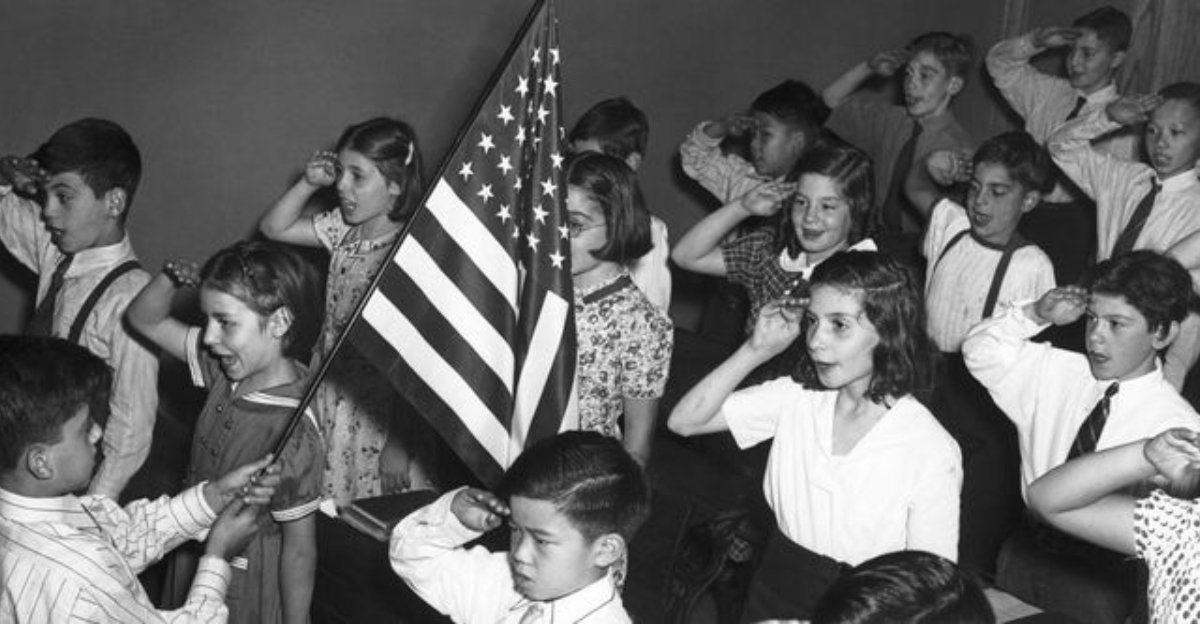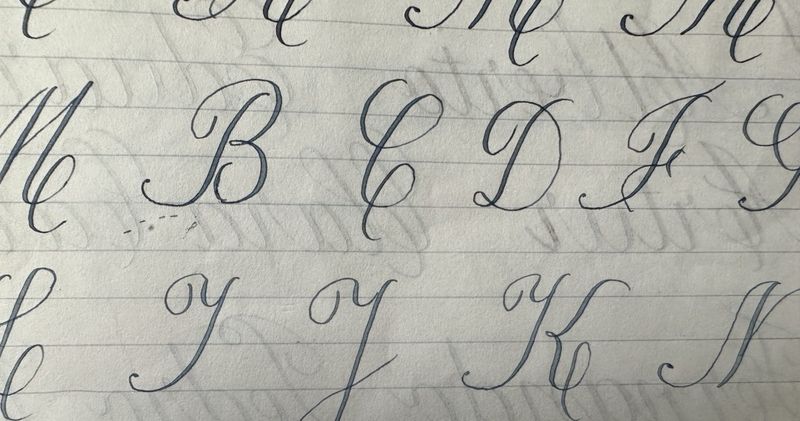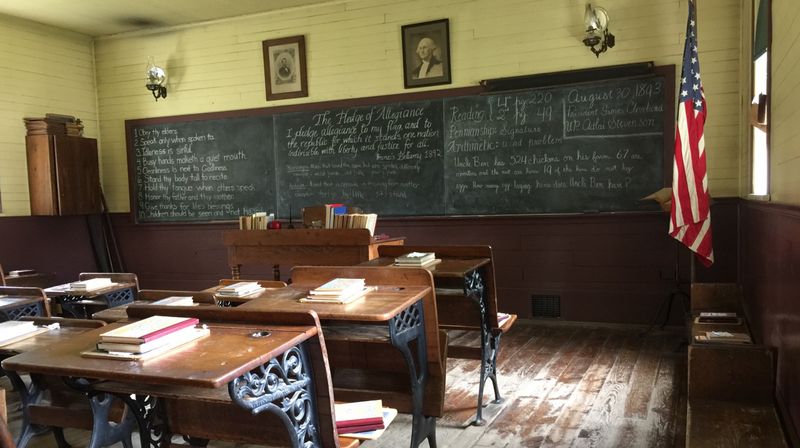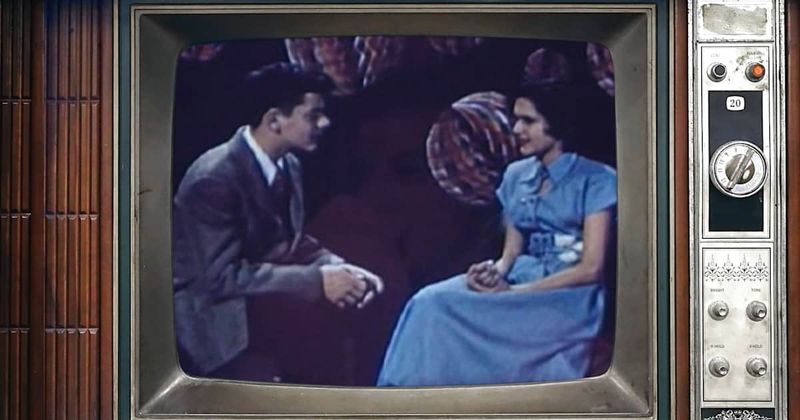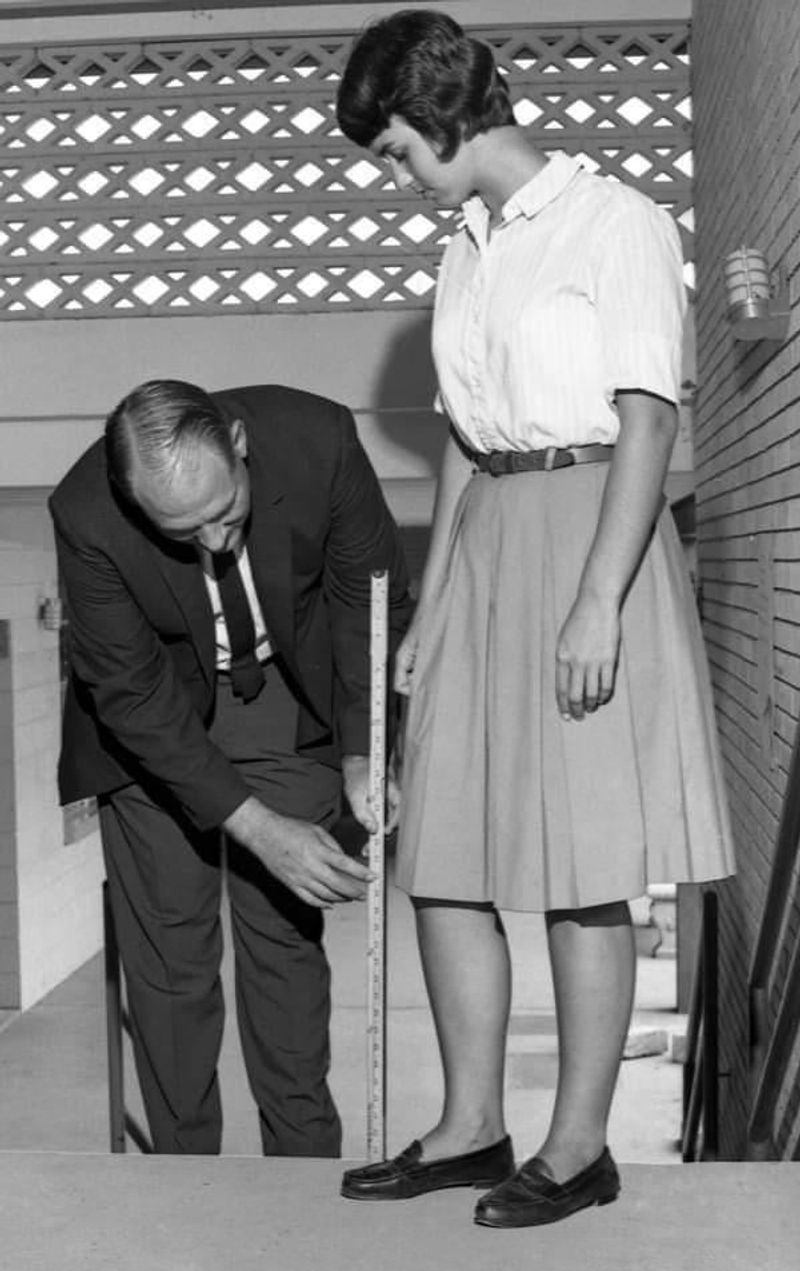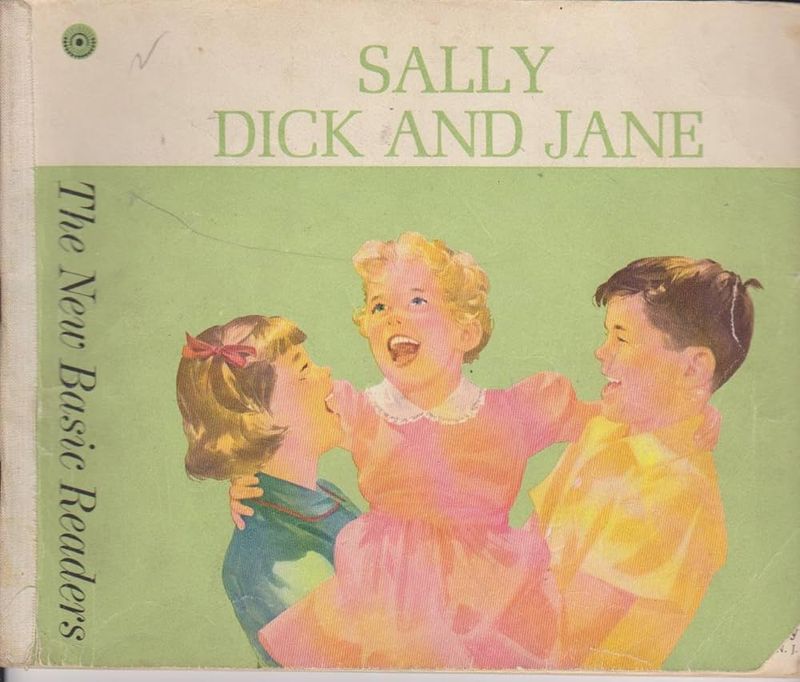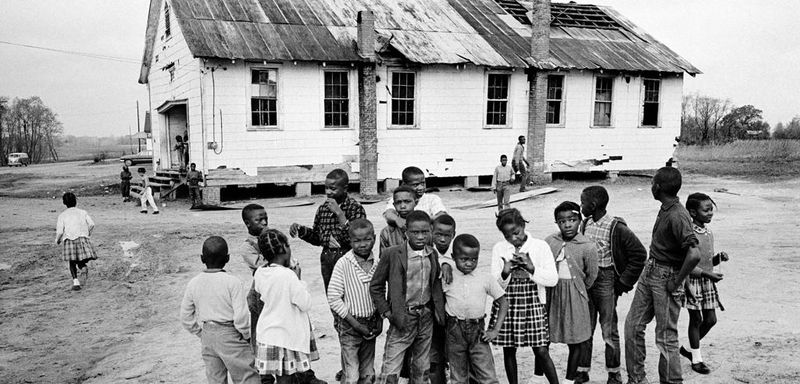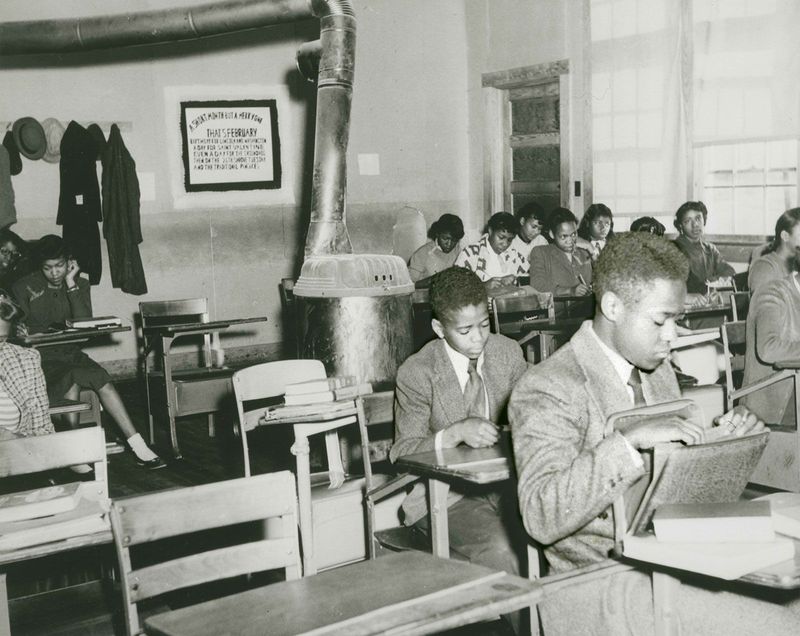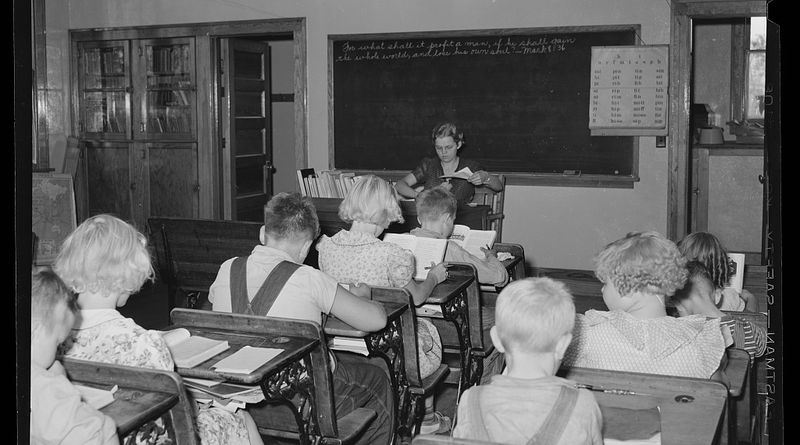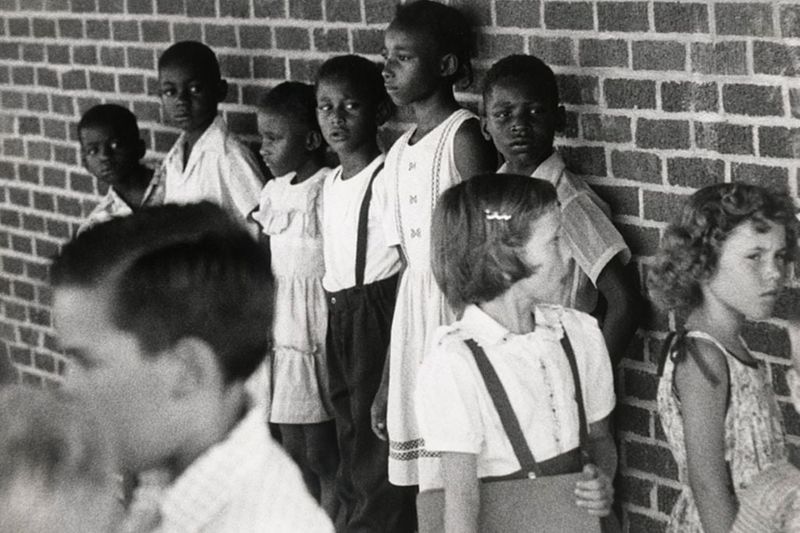School in the 1950s wasn’t just about learning ABCs and 123s. Behind many classroom activities and rules lurked deeper intentions shaped by the era’s politics, fears, and social expectations.
The Cold War, traditional values, and maintaining social order influenced what kids learned and how they learned it. Looking back now, we can see how these educational practices served purposes far beyond their surface goals.
1. Cursive Writing: More Than Beautiful Handwriting
Remember those endless loops and curves? Teachers insisted perfect handwriting would follow you through life, but the real story goes deeper.
During the Cold War, conformity was valued above all. Identical handwriting created visual uniformity that reflected the desired social order. Students who mastered cursive demonstrated their ability to follow precise instructions and maintain discipline.
This skill also ensured all Americans could communicate in a standardized way – important when the government feared Soviet infiltration. Your Palmer Method wasn’t just about penmanship; it was training in national uniformity during uncertain times.
2. Home Economics: The Homemaker Factory
Girls filed into home ec classes to learn cooking, sewing, and household management while boys typically headed to shop class. The carefully pressed aprons and perfectly set tables weren’t just about practical skills.
Post-war America needed women to return to domestic roles after their wartime work experience. Home economics provided systematic training for female students’ predetermined futures as wives and mothers.
The curriculum reinforced that a woman’s value came from maintaining an efficient, attractive home. Behind the cookie recipes and button-sewing lessons was a carefully designed program to channel young women back into traditional gender roles that supported the 1950s economic and social structure.
3. Civics and Patriotism: The Anti-Communist Curriculum
Flag displays dominated classrooms where students memorized the Constitution and celebrated American heroes. What appeared as basic government education masked a powerful ideological campaign.
The McCarthy era transformed civics education into anti-communist indoctrination. Students learned a sanitized version of American history that emphasized exceptional greatness while downplaying historical injustices.
Children were taught to view questioning government actions as potentially unpatriotic. Materials often presented democracy and capitalism as inseparable, making economic criticism seem un-American. This wasn’t just education about government systems – it was psychological armor against “red” influence during a time of national paranoia.
4. Duck-and-Cover Drills: The Fear Factory
Turtle mascot Bert instructed children to dive under desks at the flash of atomic light. Schools conducted these exercises regularly, claiming they would save lives during nuclear attack.
Experts knew these measures would provide virtually no protection against atomic blasts. The real purpose? Psychological conditioning that normalized living under constant existential threat.
These drills taught children that the government had solutions for even the most terrifying scenarios, encouraging unquestioning trust in authority. By making nuclear war seem survivable through simple actions, schools helped maintain public calm while supporting Cold War military policies. The flimsy desks offered no real safety – just the comforting illusion of control.
5. Abstinence-Only Health Education: The Silence Campaign
Health classes avoided frank discussions about human reproduction. When mentioned at all, sexuality was presented through moral frameworks emphasizing restraint and traditional marriage.
Films like “Dating Do’s and Don’ts” focused on proper behavior rather than biological facts. This educational approach wasn’t just about promoting values – it actively suppressed information that might challenge the social order.
By keeping teenagers uninformed about their bodies, schools maintained parental and religious authority over sexual development. Girls especially received messages linking their worth to purity. The resulting knowledge gaps prevented young people from making informed choices while reinforcing conservative social expectations about gender, marriage, and family formation.
6. Strict Dress Codes: Uniformity Without Uniforms
Boys’ hair couldn’t touch their collars. Girls’ skirts were measured for proper length using rulers. These seemingly arbitrary rules served as powerful social control mechanisms.
Dress codes eliminated visible class differences while suppressing cultural expressions from minority students. For girls especially, clothing restrictions reinforced the message that their bodies required constant monitoring and regulation.
Schools justified these policies as preparation for workplace expectations, but they functioned primarily as conformity training. By controlling appearance, schools taught students to prioritize institutional approval over personal expression. The student who successfully navigated these expectations demonstrated their willingness to adapt to societal norms – a quality highly valued in Cold War America.
7. The Pledge of Allegiance: God Enters the Classroom
In 1954, Congress added the words “under God” to the Pledge of Allegiance. Suddenly, every school day began with this newly religious national oath.
This addition wasn’t coincidental – it emerged directly from Cold War ideology. Since Soviet communism embraced atheism, American leaders positioned religious devotion as a patriotic duty. The revised pledge merged national identity with religious belief.
Children who might question this religious framing risked appearing unpatriotic during the height of McCarthyism. This daily ritual effectively established a religious test for good citizenship in public schools. The pledge wasn’t just about allegiance to country – it became a tool to distinguish “godly” Americans from those who might harbor dangerous, atheistic communist sympathies.
8. Dick and Jane: The Suburban Dream Team
“See Dick run. See Jane play.” These simple primers dominated early reading education with their repetitive text and idealized illustrations of white suburban life.
While teaching basic literacy, these books simultaneously delivered powerful messages about normal family structure. Father worked in an office while Mother wore dresses at home. Their comfortable single-family house with white picket fence represented the postwar American dream.
Minority children rarely saw themselves represented in these materials. The books’ narrow portrayal of family life reinforced racial segregation and traditional gender roles as natural and desirable. Beyond teaching reading, Dick and Jane were cultural ambassadors introducing children to the “correct” social aspirations in 1950s America.
9. Segregated Education: Separate and Unequal
Despite the “separate but equal” doctrine, Black schools received outdated textbooks, inadequate facilities, and fewer resources. This educational apartheid persisted in many states even after the 1954 Brown decision.
White officials claimed segregation benefited all students. The reality? A deliberate system to maintain racial hierarchy by limiting Black children’s educational opportunities.
White schools often received 3-4 times more funding per student. Black teachers typically earned lower salaries despite equal qualifications. This structural inequality wasn’t an unfortunate oversight – it was the intended function of a system designed to preserve white economic and social advantage by restricting Black Americans’ access to quality education and the opportunities it provided.
10. Rote Memorization: The Knowledge Without Understanding
Students spent hours memorizing multiplication tables, state capitals, and historical dates. Teachers praised those who could perfectly recite facts without necessarily understanding their significance.
This approach wasn’t simply about building knowledge foundations. Rote learning prioritized information absorption over analytical thinking – a method that discouraged questioning established narratives.
By emphasizing memorization over critical analysis, schools produced graduates who could repeat information but might lack tools to evaluate its validity or context. During the McCarthy era, when questioning authority could bring suspicion, this educational approach created citizens less likely to challenge prevailing political narratives. Knowledge became something to receive and repeat rather than examine and question.
11. Obedience to Authority: The Unquestioning Citizen Training
Raising your hand before speaking. Standing when adults entered the room. These weren’t just polite conventions but components of a comprehensive obedience training system.
Schools functioned as miniature societies where authority was absolute and unquestionable. Children who challenged rules or questioned teachers faced swift punishment, often physical in an era when corporal discipline remained common.
This rigid hierarchy prepared students for a world where following orders from employers, government, and military officials was expected without question. During the Cold War, when unity against external threats was paramount, independent thinking could be viewed as dangerous. Schools didn’t just teach respect – they systematically conditioned children to accept authority without challenging its legitimacy.
12. Limited Science Instruction: Knowledge with Boundaries
Science classes focused on basic principles and practical applications while avoiding topics that might conflict with religious or political sensibilities. Evolution, when taught at all, was often presented as just one theory among many.
This selective approach wasn’t educational oversight. It reflected deliberate efforts to avoid controversial subjects that might prompt students to question traditional authorities.
Many schools emphasized technological applications that supported American industrial and military advancement while downplaying scientific concepts that might challenge social conventions. This carefully curated science education created technically capable workers without encouraging the kind of critical inquiry that might extend to questioning social structures. Science became a tool for national advancement rather than a method for seeking truth.
13. Silent Lunches and Single-File Lines: The Military-Style Management
Schools enforced silent lunches where talking earned punishment. Students moved between classes in perfect lines, maintaining precise spacing and absolute quiet.
Administrators justified these practices as necessary for efficiency and good manners. The true purpose was behavioral conditioning that prepared children for environments requiring unquestioning compliance.
These regimented practices mimicked military discipline, teaching students to subordinate personal comfort and social needs to institutional demands. Children learned that authority could legitimately control even basic human interactions like conversation. This training created adults comfortable with hierarchical structures and institutional control – qualities valued in both military recruits and corporate employees during the 1950s economic and military expansion.
14. Lack of World History: The American Exceptionalism Narrative
History classes centered almost exclusively on American achievements while offering minimal coverage of other cultures. When world events appeared at all, they typically served to highlight American superiority.
This wasn’t simply curricular prioritization. It represented a deliberate effort to foster nationalism by limiting students’ global awareness.
By minimizing exposure to other societies’ contributions and perspectives, schools reinforced the narrative that American systems and values were universally superior. Colonial histories were sanitized, American interventions abroad were presented as uniformly benevolent, and complex global conflicts were reduced to simplistic moral tales. This approach created citizens with strong national pride but limited ability to understand international perspectives – perfect for a superpower seeking domestic support for its global ambitions.
15. Career Tracking: The Social Sorting System
Schools sorted teenagers into academic or vocational tracks, often based on factors beyond academic ability. This system claimed to prepare students for appropriate careers based on their talents.
Reality was less benevolent. Working-class and minority students frequently found themselves directed toward industrial and service training regardless of their academic potential. Meanwhile, middle-class white students received encouragement toward college preparatory courses.
Guidance counselors often steered girls away from science and mathematics toward secretarial training or teaching. These tracking decisions weren’t merely educational – they functioned as powerful social sorting mechanisms that reinforced existing class and racial hierarchies while ensuring industrial employers had a steady supply of workers prepared for their specific needs.
